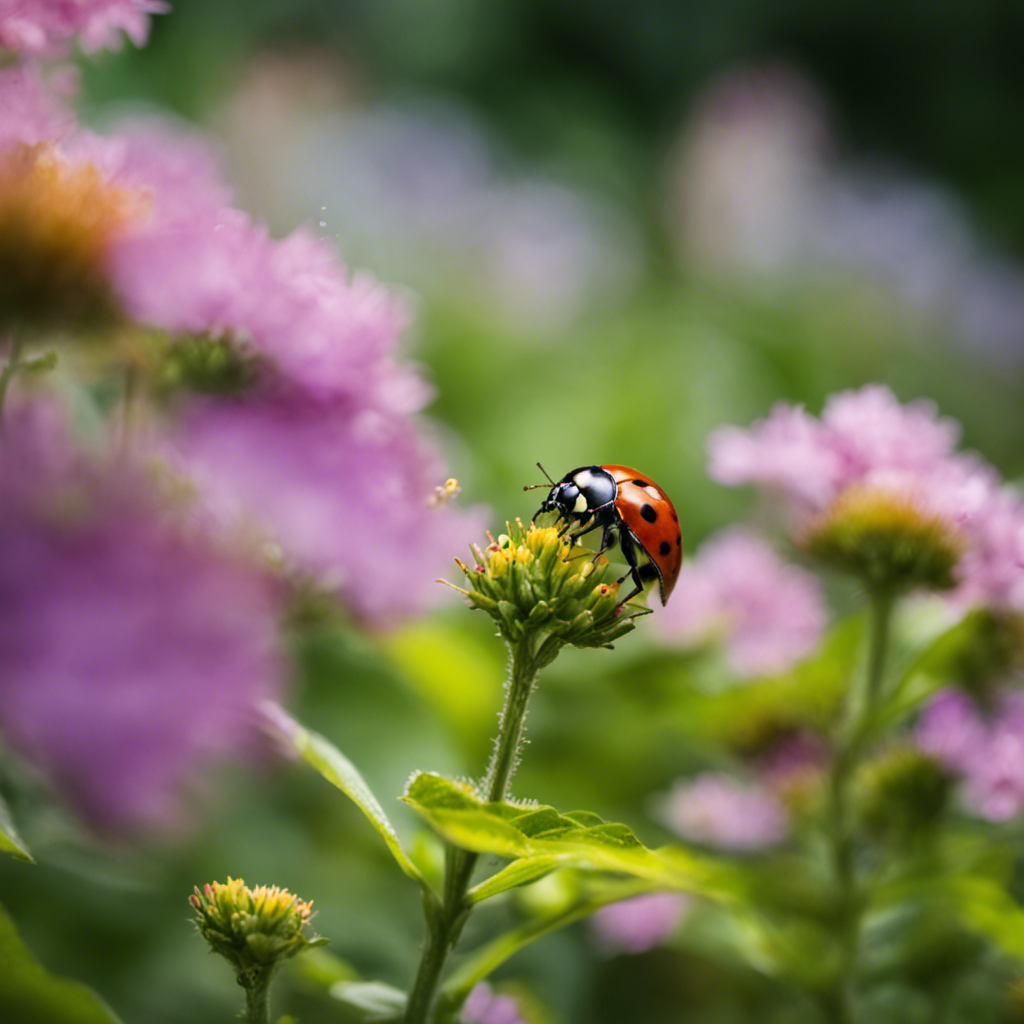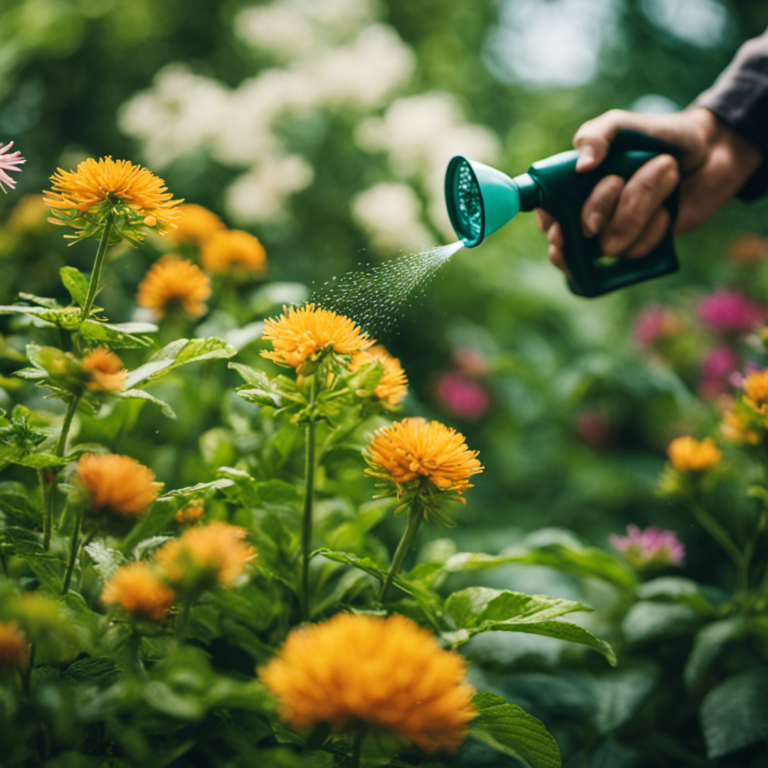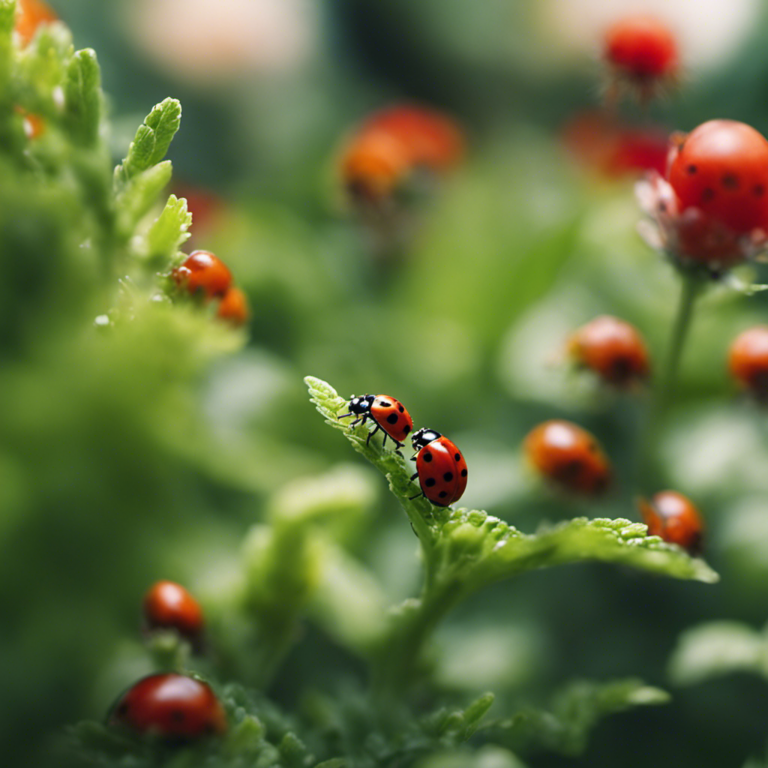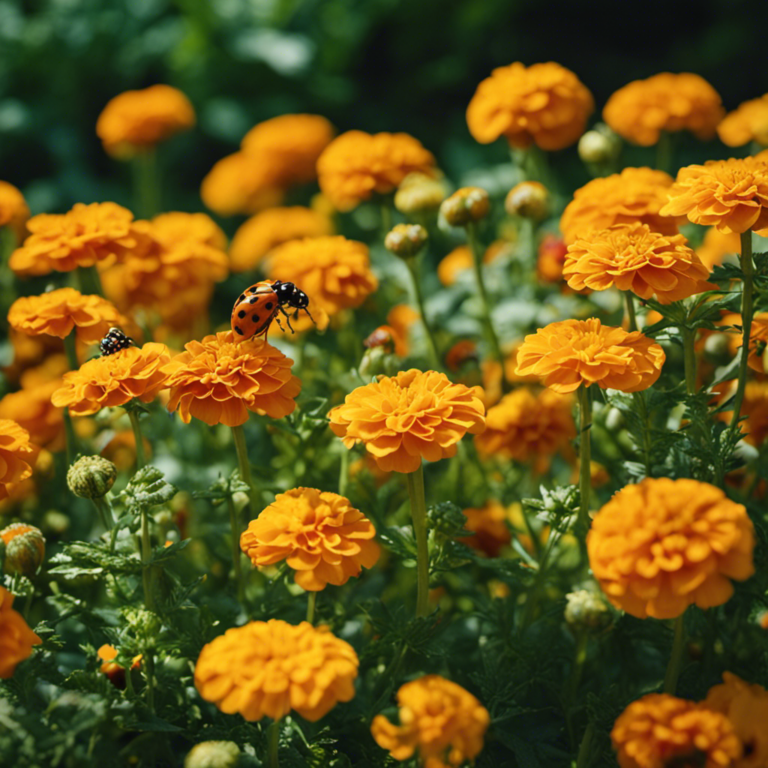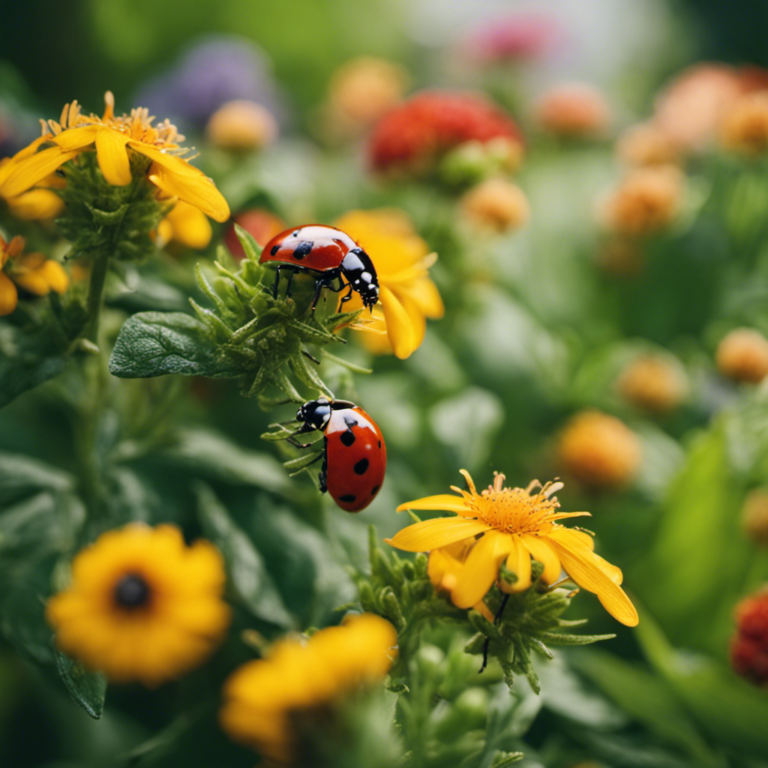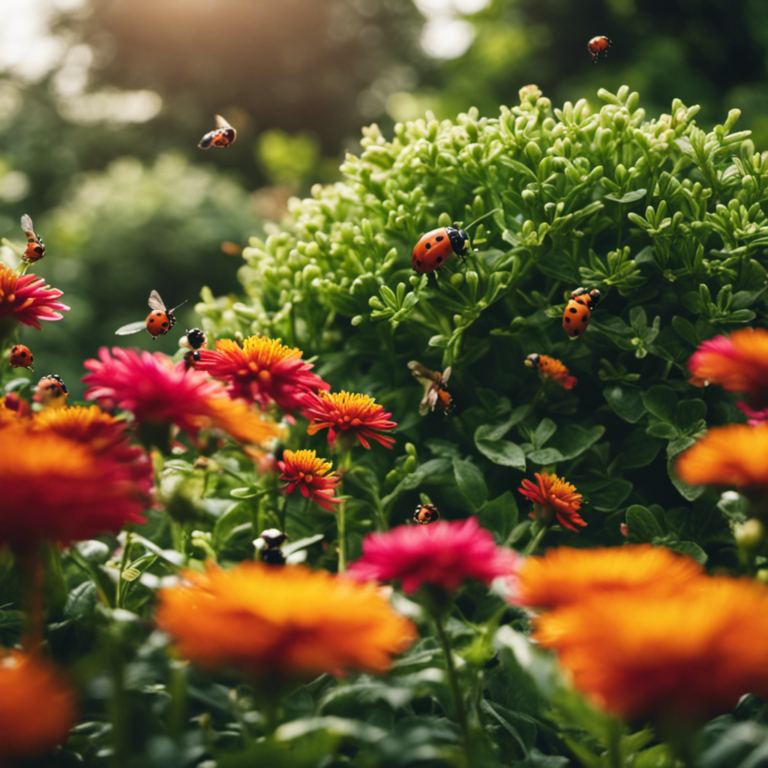Are you tired of pests ruining your garden? Don’t worry! This Green Thumb Guide will provide you with eco-friendly pest control tactics to restore harmony to your garden.
We will show you natural repellents and organic pesticides that effectively protect your plants without harming the environment.
Embrace a greener approach and bid farewell to those unwanted garden intruders.
Let’s get started on creating a beautiful and pest-free garden.
Key Takeaways
Congratulations! By implementing these environmentally-friendly pest control tactics, you have unlocked the key to maintaining a thriving garden without causing harm to the ecosystem.
With natural repellents, biological controls, physical barriers, companion planting, and organic pesticides, you now possess a powerful set of tools to protect your plants.
Say goodbye to toxic chemicals and embrace a new era of sustainable gardening.
Get ready to witness your garden flourish as you become a responsible steward of nature’s beauty.
Natural Repellents
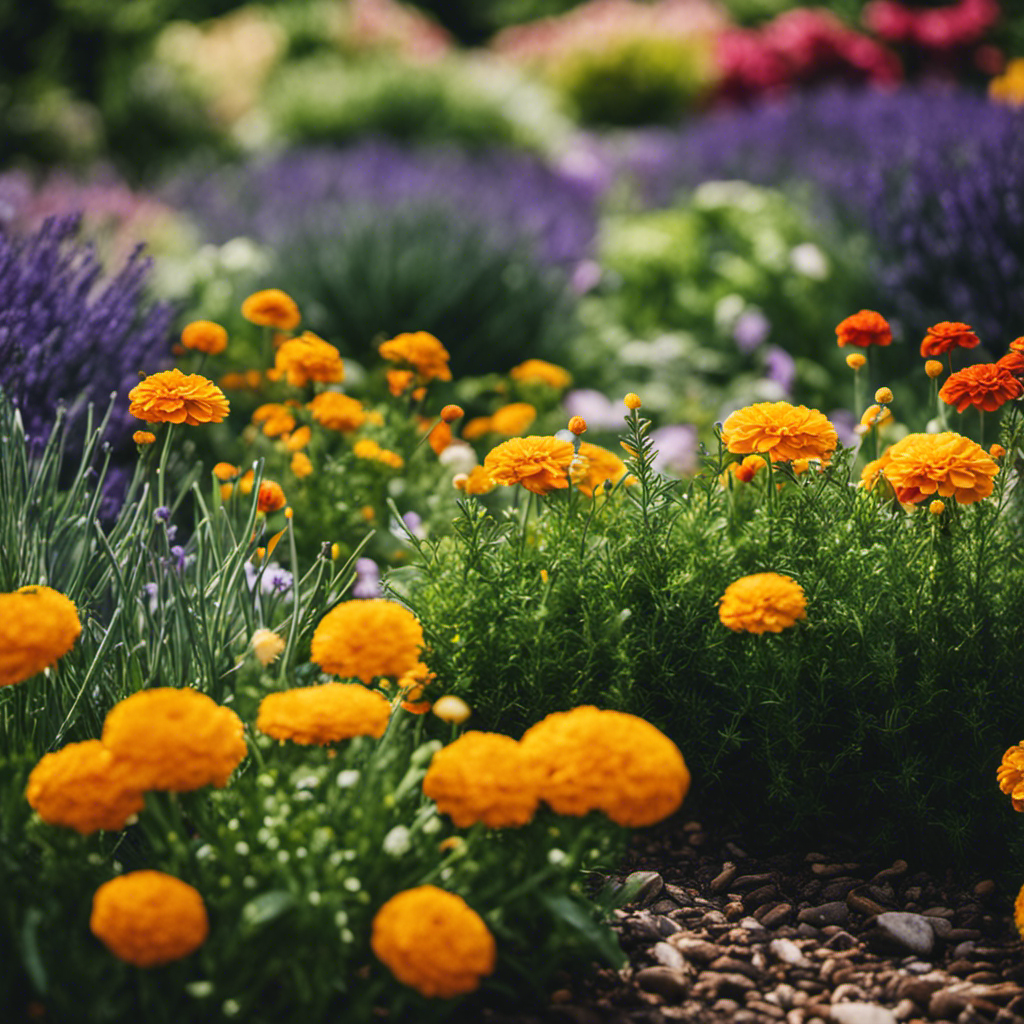
Using natural repellents is a great way to keep pests away from your garden without resorting to harmful chemicals. Homemade remedies and essential oils can be highly effective in deterring unwanted pests.
One simple homemade remedy involves creating a mixture of garlic and water. By crushing several cloves of garlic and letting them steep in water for a few days, you can create a potent solution. After straining the mixture, you can spray it on your plants. The strong odor of garlic acts as a natural repellent, keeping pests like aphids and caterpillars at bay.
Essential oils are another excellent option for repelling pests. Oils such as peppermint, lavender, and citronella can be mixed with water and sprayed on your plants or around the perimeter of your garden. The strong scent of these oils helps to deter pests and protect your plants.
Biological Controls
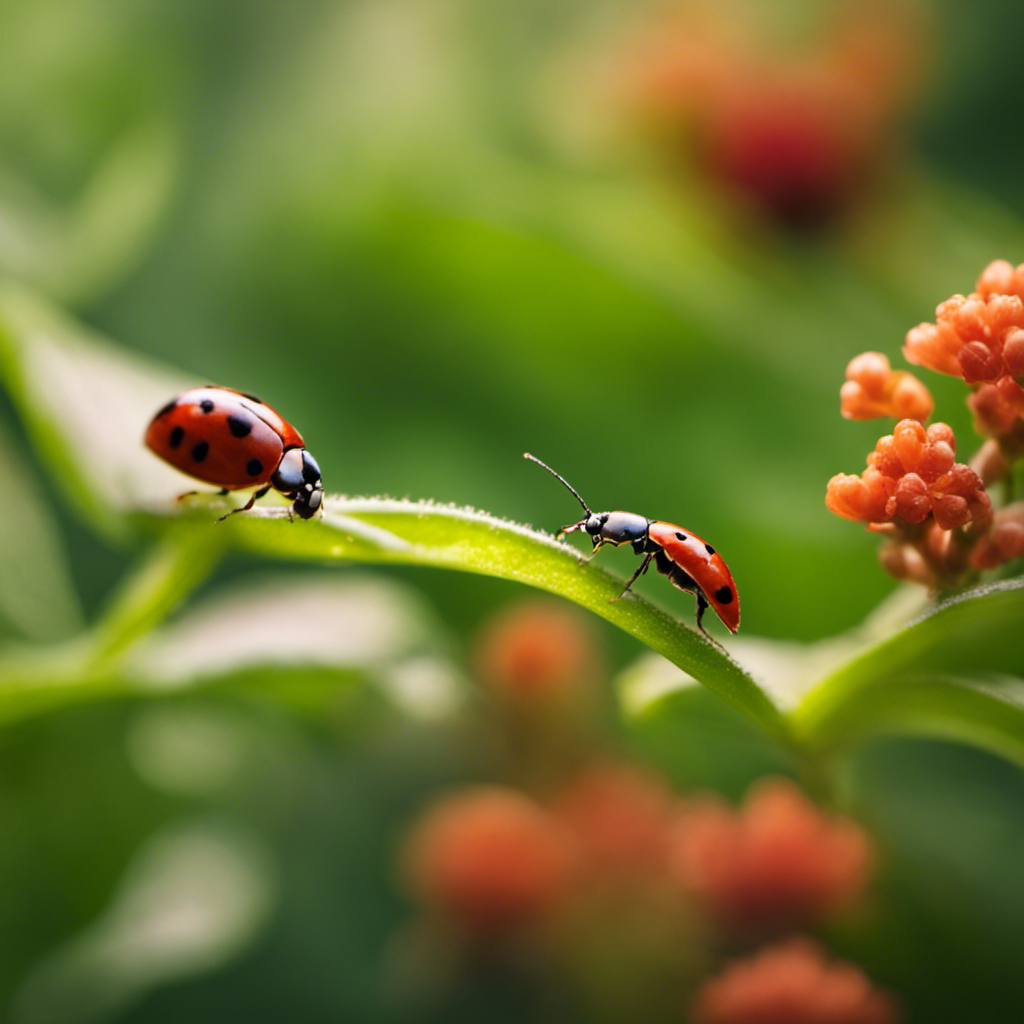
One effective method for environmentally friendly pest control in your garden is through the use of biological controls. By introducing beneficial insects into your garden, you can naturally control the population of pests without relying on harmful pesticides.
Ladybugs, for example, are voracious predators of aphids and other garden pests. By releasing them into your garden, you can keep the aphid population in check and protect your plants from damage.
Another way to utilize biological controls is by planting pest-resistant plants. These plants have natural defense mechanisms that repel pests, reducing the need for chemical intervention. For instance, marigolds emit a scent that repels many common garden pests.
Physical Barriers
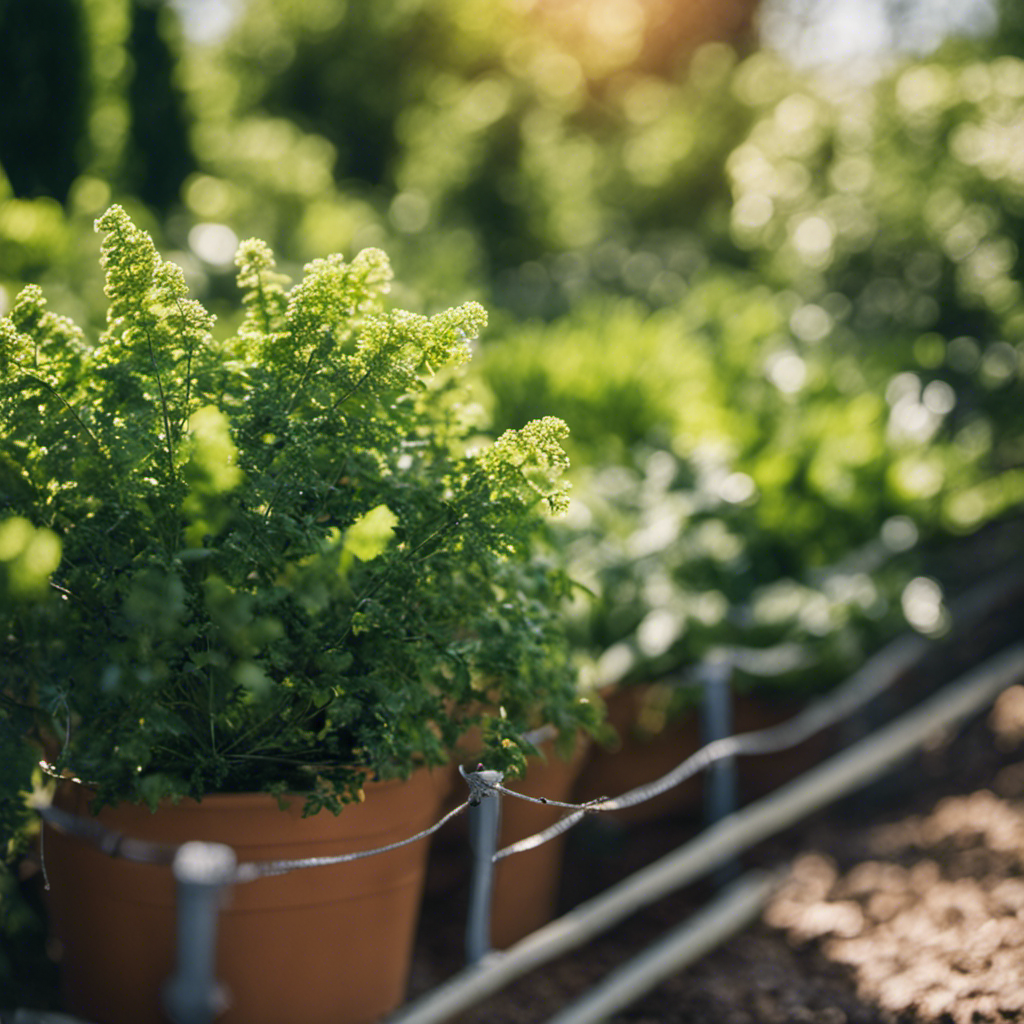
By incorporating physical barriers into your garden, you can improve your eco-friendly pest control practices. Physical barriers offer a safe and effective way to protect your plants from pests.
One of the advantages of using physical barriers is that they create a barrier between your plants and pests, preventing them from reaching your plants and causing damage.
There are various types of physical barriers you can utilize, such as fences, netting, and row covers. Fences are particularly useful for keeping out larger pests like rabbits and deer. Netting can be used to cover plants and shield them from birds and insects. Row covers are an excellent option for safeguarding plants from flying pests like moths and butterflies.
Companion Planting
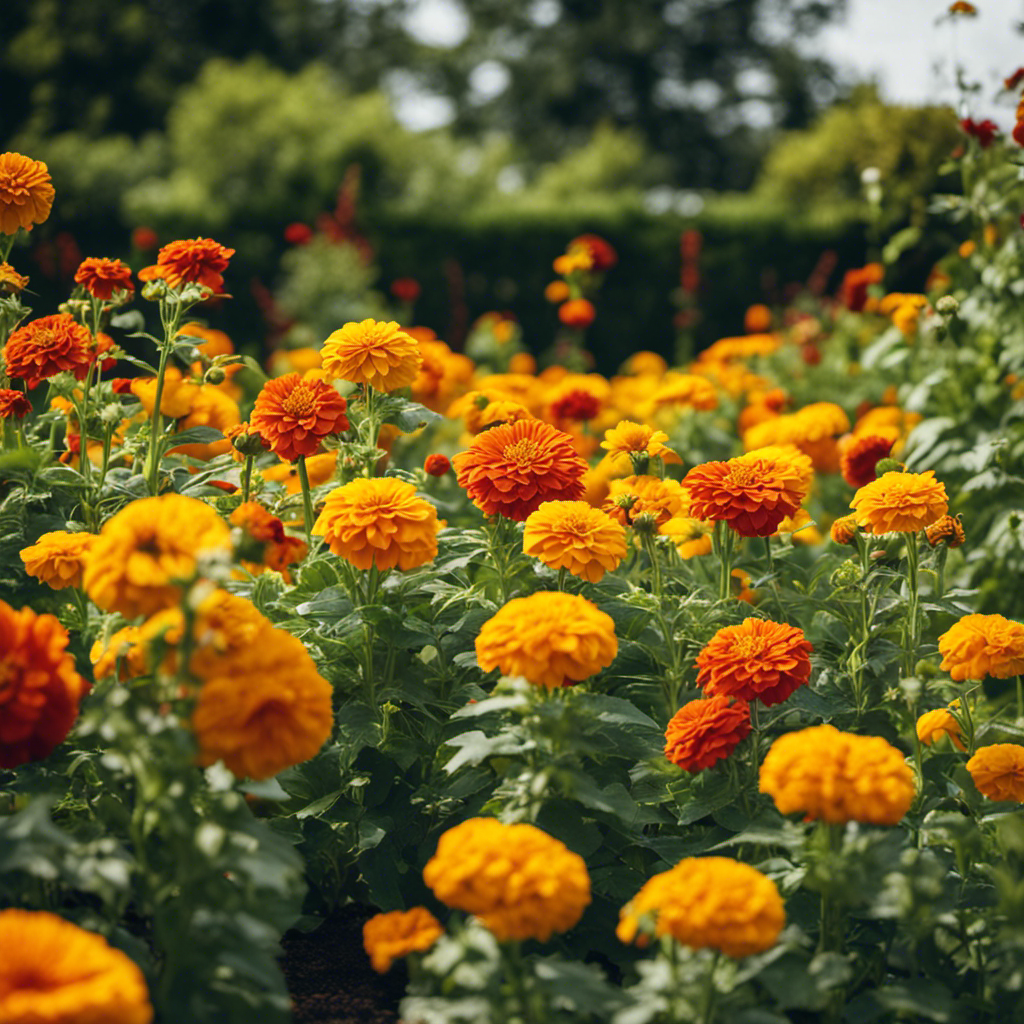
Implementing companion planting for eco-friendly pest control involves pairing compatible plants in your garden. Companion planting is a technique where certain plants are grown together to benefit each other. By understanding the benefits of companion planting, you can enhance plant diversity and prevent pests in the following ways:
-
Pest-repellent plants: Some plants, such as marigolds and garlic, naturally repel pests due to their strong scent. By planting these alongside your vulnerable crops, you can deter pests effectively.
-
Trap crops: Certain plants like radishes and nasturtiums attract pests away from your main crops. Planting these trap crops nearby can divert pests and safeguard your valuable plants.
-
Beneficial insects: Flowers like sunflowers and daisies attract beneficial insects like ladybugs and hoverflies. These insects feed on pests like aphids and help maintain a balanced garden ecosystem.
-
Nutrient sharing: Some plants, like legumes and corn, have the ability to fix nitrogen in the soil. Planting these nitrogen-fixing plants alongside other crops can improve the overall health and fertility of your garden.
Incorporating companion planting strategies allows you to create a diverse and harmonious garden that naturally prevents pests and promotes plant growth.
Organic Pesticides

Using organic pesticides is a practical and environmentally-friendly way to manage pests. These pesticides are derived from natural ingredients like plant extracts and essential oils, making them safe for the environment, humans, and beneficial insects.
One option is to create homemade remedies using ingredients such as garlic, neem oil, or a mixture of soap and water. These homemade pesticides can effectively control a range of pests including aphids, mites, and caterpillars.
Another approach is integrated pest management, which involves combining different techniques to control pests. This may include using traps, introducing natural predators, and maintaining good sanitation in your garden.
Conclusion
Congratulations! By implementing these environmentally-friendly pest control tactics, you have discovered the key to maintaining a thriving garden without causing harm to the ecosystem.
With natural repellents, biological controls, physical barriers, companion planting, and organic pesticides, you now have a powerful set of tools to protect your plants.
Bid farewell to toxic chemicals and welcome a new era of sustainable gardening.
Prepare to witness your garden flourish as you become a responsible steward of nature’s beauty.
